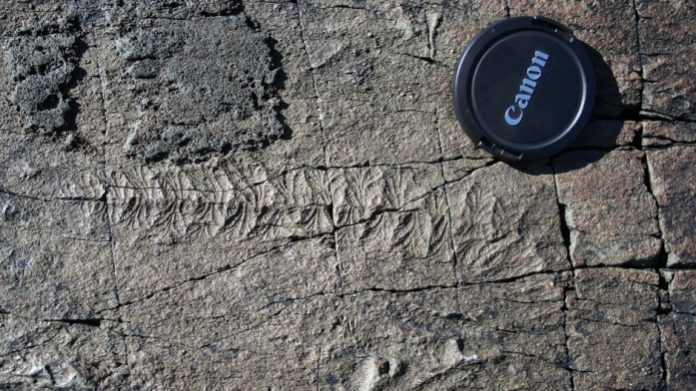Animal, vegetable, or mineral? The 500-million year old fossils found at Mistaken Point, Newfoundland & Labrador are none of these. Or are they?
Almost 50 years after their discovery, Professor Duncan McIlroy from Memorial University, argues that Fractofusus, a spindle-shaped organism that sat motionless on the ocean floor, should be classified as an animal.
“One of the common definitions of animals is that they have the ability to move,” says McIlroy. “But if Fractofusus were alive today, would we use that same definition?”
Fractofusus is only one of the types of fossils represented in the collection at Mistaken Point, all of which belong to a puzzling group of organisms called the Ediacaran biota. These organisms are the earliest examples of complex multi-cellular life, yet they all seem to have disappeared before animals, as we know them, arrived.
Another perplexing aspect is how Fractofusus survived despite its lack of movement.
Anything that sits on the seafloor cuts off the supply of oxygen to its bottom surface. This provides ideal conditions for sulfate reducing bacteria, which produce copious amounts of toxic hydrogen sulfide. Normally, sedentary organisms try and minimize their bottom surface area to deal with this problem, but Fractofusus’ fractal-like lower surface seems to maximize it.
That’s where the idea of symbiosis comes into play.
Win win
Symbiosis is a close interaction between two different species with mutual benefits.
“I put to it my colleague Suzanne Dufour…that Fractofusus might have had [symbiotic bacteria] on its surface to help with that detoxification of hydrogen sulfide,” says McIlroy. She agreed.
These bacteria would have received oxygen from the Fractofusus, while digesting the toxic hydrogen sulfide and providing a source of food.
“When I first studied these rocks in 1992, the Ediacaran fauna were considered to be weird relatives of jellyfish; we have come a long way in our understanding since then,” says McIlroy.
But despite this insight into Fractofusus’ lifestyle, whether or not it is classified as an animal is still a matter of expert consensus. And that might not happen for a while.
“There is still so much to do before we truly understand these earliest of animals.”




































